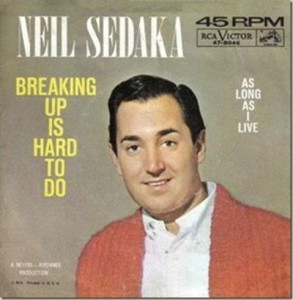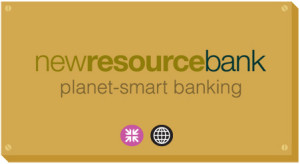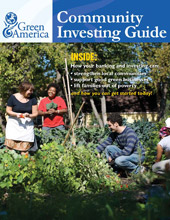Most people aren’t sentimental in the least about their banks. It should be much easier to break up with your megabank than your girlfriend or boyfriend, and much less painful. Yet many socially responsible customers remain with megabanks even when far more attractive alternatives open in their town, although, to corrupt the title of Neil Sedaka’s sappy early-1960s teen idol smash, “Breaking Up’s Not Hard to Do.”
I’m not omitting myself from this category. While most of my funds have been in SRI (socially responsible investment) accounts for years, I kept a megabank checking account open for minimal everyday expenses, out of convenience and, I guess, laziness. A couple weeks ago I did finally close that big-bank account.
Here in San Francisco, we’re fortunate enough, unlike many cities, to have one bank specifically geared toward “bringing new resources to sustainable businesses and ultimately creating more sustainable communities.” This is New Resource Bank, founded in 2006. And yes, it does have only one branch, downtown near the Ferry Building/waterfront, which is not convenient to many San Franciscans living in residential neighborhoods miles away.
The most common reasons other acquaintances concerned about socially responsibility give for not closing their megabank accounts is that it’s convenient to have ATMs every few blocks, kind of like 7-11s of instant cash withdrawal. Additionally, if the socially responsible bank doesn’t have many ATMs, or certainly not one in your neighborhood, you might not want to pay fees every time you withdraw cash from a nearby ATM when you need money in a hurry.
But with New Resource, you get five free rebates on debit card fees per month (and unlimited debit fee rebates if you choose their “high-impact” checking account, which requires a significantly higher average daily balance to avoid service charges). As for their service charges, acknowledging that this is beyond the means of some, there aren’t any if you maintain an average daily balance of $5000 (or combined checking/saving balance of $10,000). There is a $20 monthly service fee if you don’t meet that balance. But if you have the means, the more socially and environmentally conscious directions in which your money goes seems worth the time and effort in doing a little more careful planning of your ATM withdrawals and account balance maintenance. Note too that New Resource is FDIC-insured, which covers amounts of $250,000 per depositor, if that is another concern over switching from megabank.
Maybe this shouldn’t be the most important factor in choosing your bank, but I also appreciate the no-nonsense, straightforward service when I have gone into New Resource’s one branch. Even though it took only 15 minutes or so to close my megabank account, the atmosphere in my ex-megabank – constant “how are you”s and “good morning”s, canned music, large infomercial screen – was so artificial I couldn’t wait to get out of there. (They nonetheless couldn’t wait to get me back, leaving a message aimed at getting me to reopen an account with them 24 hours later.) At New Resource, there are a few staff (I’ve never seen more than five) at desks; never any lines; and quick, polite execution of simple tasks without unnecessary false pleasantries. It’s all so much more adult, as if they know you’re smart enough to do what you came to do without any additional fuss.
Lest this seem like I’m being too much of a shill for New Resource, it can be pointed out there are other similar banks outside of San Francisco – though not, alas, to many. Across the bay in Oakland, One Pacificcoast Bank (sic) is “the first commercial bank in the US with a commitment to sustainable community development.” It must be said, however, that there aren’t nearly as many of these institutions in the US as one would hope, and if you’re nervous about putting your funds in an out-of-town bank, you might be out of luck. Green America’s Community Investing Guide (free online at http://www.greenamerica.org/PDF/GuideInvestCommunities.pdf) lists come options, and credit unions generally are a much better choice for accounts than the big guns if your region doesn’t have a New Resource-like bank.


